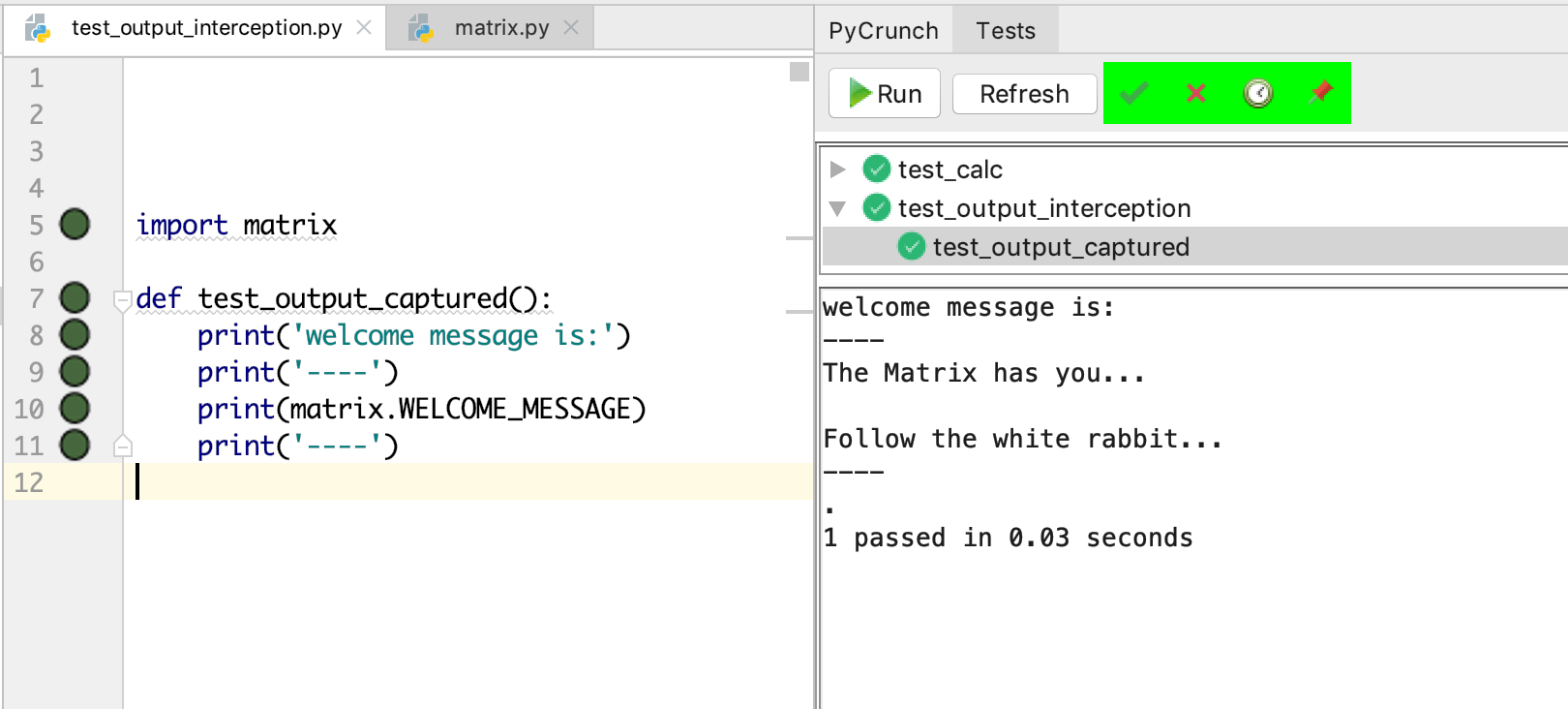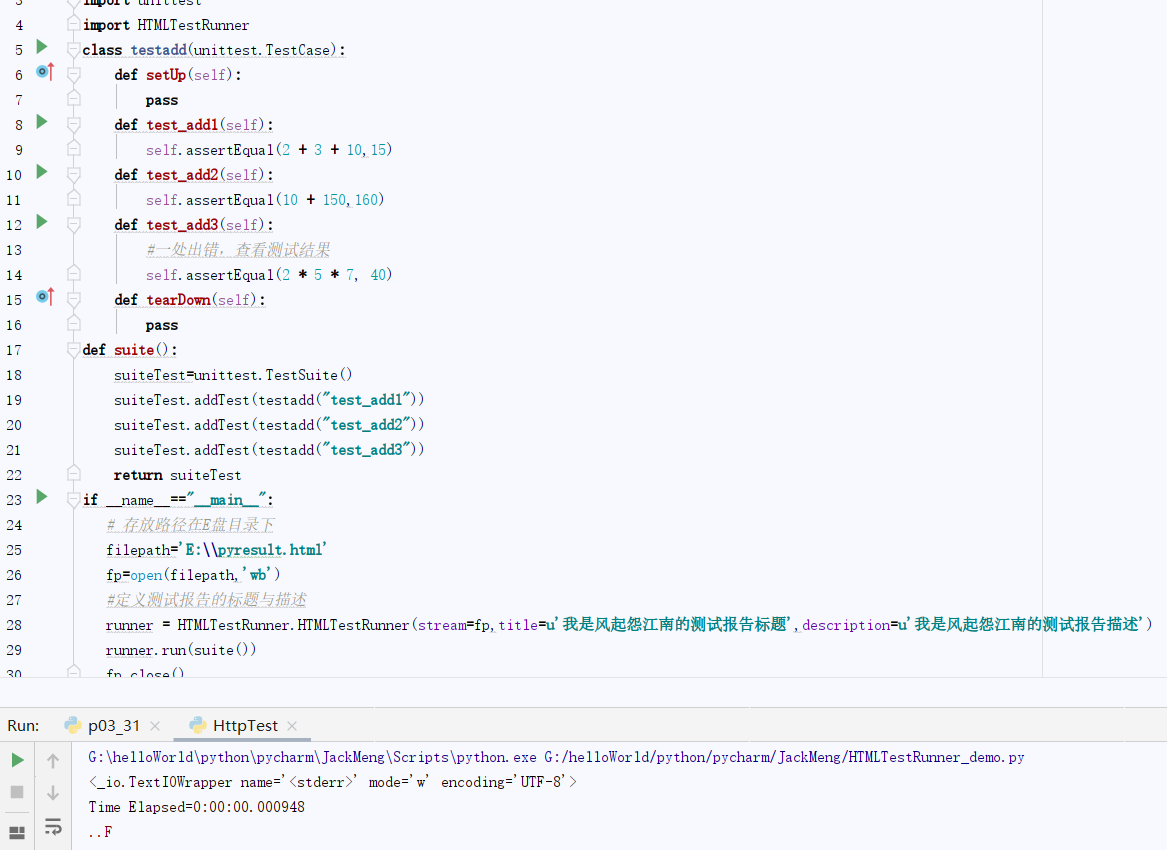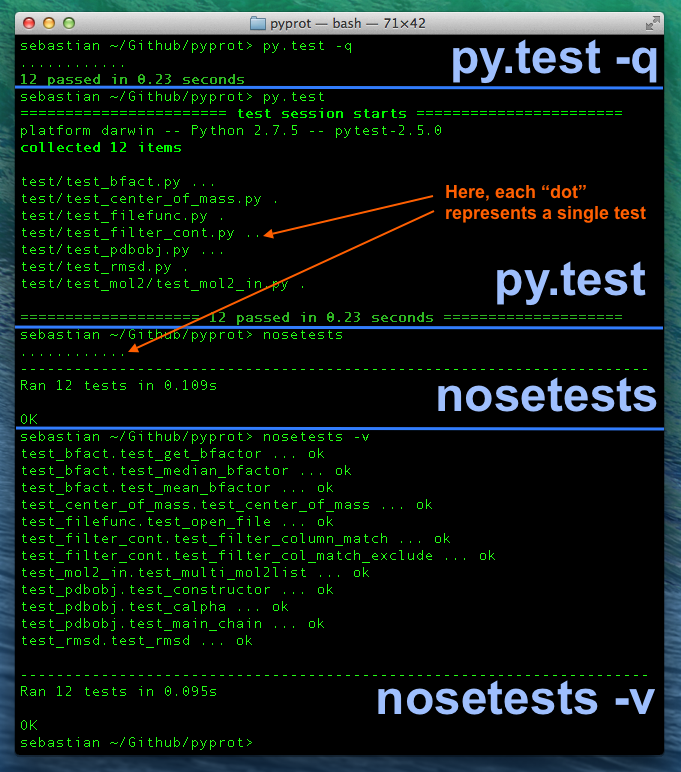
A new Python-based project called Python Test Runner ( ptr ), that allows developers to run Python unit test suites. The main difference between ptr and existing test runners is that ptr crawls a repository to find Python projects with unit tests defined in their setup files. It then runs each suite in parallel with configured enabled steps. HtmlTest runner is a unittest test runner that save test results in Html files, for human readable presentation of results. This Package was inspired in unittest-xml-reporting and HtmlTestRunner by tungwaiyip.
Note
This document assumes you are working from anin-development checkout of Python. If youare not then some things presented here may not work as they may dependon new features not available in earlier versions of Python.
Running¶
Python Test Runner Function

The shortest, simplest way of running the test suite is the following commandfrom the root directory of your checkout (after you havebuilt Python):
You may need to change this command as follows throughout this section.On most Mac OS X systems, replace ./pythonwith ./python.exe. On Windows, use python.bat. If usingPython 2.7, replace test with test.regrtest.


If you don’t have easy access to a command line, you can run the test suite froma Python or IDLE shell:
This will run the majority of tests, but exclude a small portion of them; theseexcluded tests use special kinds of resources: for example, accessing theInternet, or trying to play a sound or to display a graphical interface onyour desktop. They are disabled by default so that running the test suiteis not too intrusive. To enable some of these additional tests (and forother flags which can help debug various issues such as reference leaks), readthe help text:
If you want to run a single test file, simply specify the test file name(without the extension) as an argument. You also probably want to enableverbose mode (using -v), so that individual failures are detailed:
To run a single test case, use the unittest module, providing the importpath to the test case:
If you have a multi-core or multi-CPU machine, you can enable parallel testingusing several Python processes so as to speed up things:
If you are running a version of Python prior to 3.3 you must specify the numberof processes to run simultaneously (e.g. -j2).
Finally, if you want to run tests under a more strenuous set of settings, youcan run test as:
The various extra flags passed to Python cause it to be much stricter aboutvarious things (the -Wd flag should be -Werror at some point, but thetest suite has not reached a point where all warnings have been dealt with andso we cannot guarantee that a bug-free Python will properly complete a test runwith -Werror). The -r flag to the test runner causes it to run tests ina more random order which helps to check that the various tests do not interferewith each other. The -w flag causes failing tests to be run again to seeif the failures are transient or consistent.The -uall flag allows the use of all availableresources so as to not skip tests requiring, e.g., Internet access.
To check for reference leaks (only needed if you modified C code), use the-R flag. For example, -R3:2 will first run the test 3 times to settledown the reference count, and then run it 2 more times to verify if there areany leaks.
You can also execute the Tools/scripts/run_tests.py script as found in aCPython checkout. The script tries to balance speed with thoroughness. But ifyou want the most thorough tests you should use the strenuous approach shownabove.

Unexpected Skips¶
Sometimes when running the test suite, you will see “unexpected skips”reported. These represent cases where an entire test module has beenskipped, but the test suite normally expects the tests in that module tobe executed on that platform.
Python Code Runner Download
Often, the cause is that an optional module hasn’t been built due to missingbuild dependencies. In these cases, the missing module reported when the testis skipped should match one of the modules reported as failing to build whenCompile and build.
In other cases, the skip message should provide enough detail to help figureout and resolve the cause of the problem (for example, the default securitysettings on some platforms will disallow some tests)
Writing¶
Writing tests for Python is much like writing tests for your own code. Testsneed to be thorough, fast, isolated, consistently repeatable, and as simple aspossible. We try to have tests both for normal behaviour and for errorconditions. Tests live in the Lib/test directory, where every file thatincludes tests has a test_ prefix.
One difference with ordinary testing is that you are encouraged to rely on thetest.support module. It contains various helpers that are tailored toPython’s test suite and help smooth out common problems such as platformdifferences, resource consumption and cleanup, or warnings management.That module is not suitable for use outside of the standard library.
When you are adding tests to an existing test file, it is also recommendedthat you study the other tests in that file; it will teach you which precautionsyou have to take to make your tests robust and portable.
Html Test Runner Python
Benchmarks¶
Benchmarking is useful to test that a change does not degrade performance.
Web Python Runner
The Python Benchmark Suitehas a collection of benchmarks for all Python implementations. Documentationabout running the benchmarks is in the README.txt of the repo.